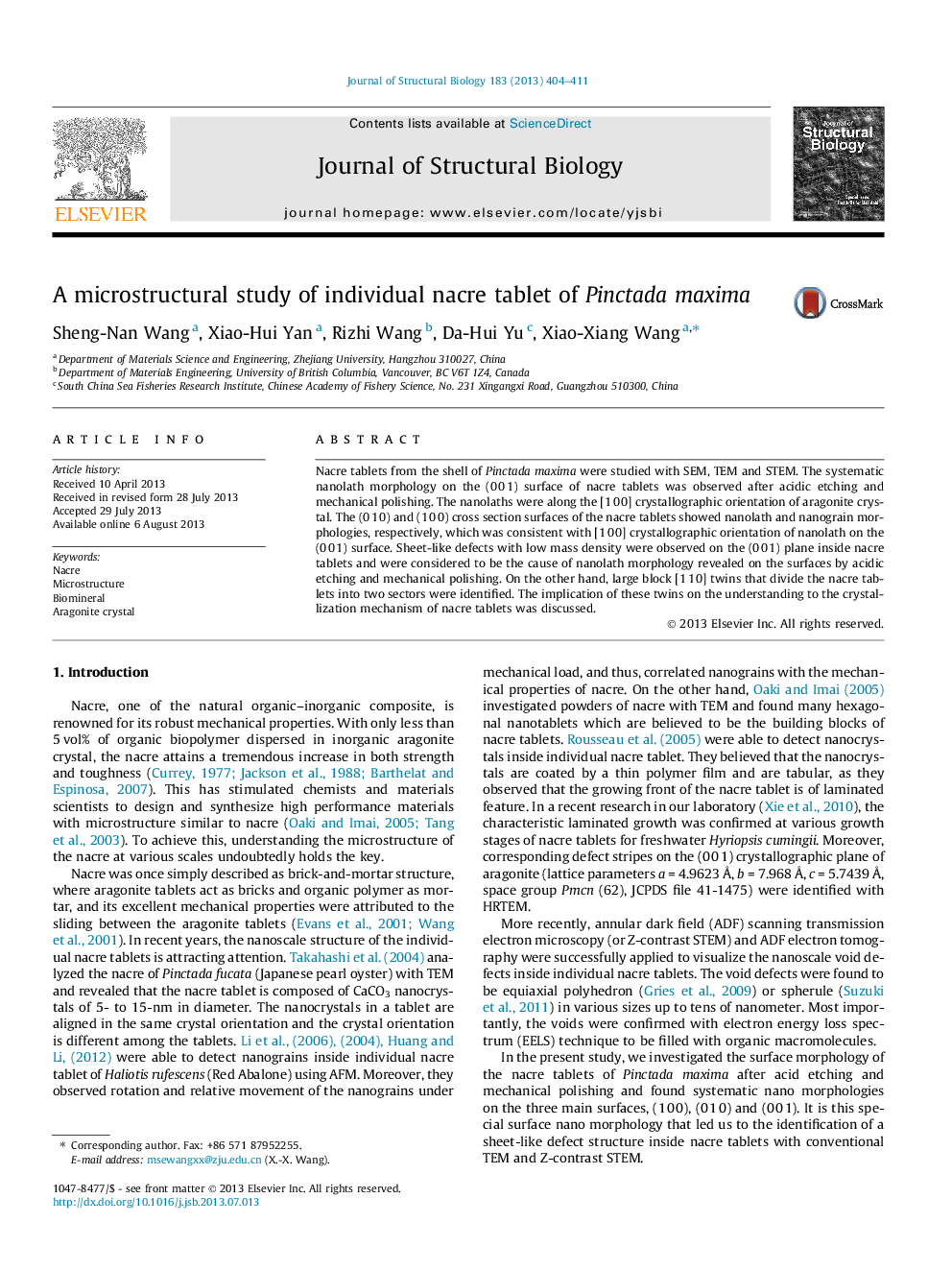| Article ID | Journal | Published Year | Pages | File Type |
|---|---|---|---|---|
| 5914361 | Journal of Structural Biology | 2013 | 8 Pages |
Abstract
Nacre tablets from the shell of Pinctada maxima were studied with SEM, TEM and STEM. The systematic nanolath morphology on the (0Â 0Â 1) surface of nacre tablets was observed after acidic etching and mechanical polishing. The nanolaths were along the [1Â 0Â 0] crystallographic orientation of aragonite crystal. The (0Â 1Â 0) and (1Â 0Â 0) cross section surfaces of the nacre tablets showed nanolath and nanograin morphologies, respectively, which was consistent with [1Â 0Â 0] crystallographic orientation of nanolath on the (0Â 0Â 1) surface. Sheet-like defects with low mass density were observed on the (0Â 0Â 1) plane inside nacre tablets and were considered to be the cause of nanolath morphology revealed on the surfaces by acidic etching and mechanical polishing. On the other hand, large block [1Â 1Â 0] twins that divide the nacre tablets into two sectors were identified. The implication of these twins on the understanding to the crystallization mechanism of nacre tablets was discussed.
Keywords
Related Topics
Life Sciences
Biochemistry, Genetics and Molecular Biology
Molecular Biology
Authors
Sheng-Nan Wang, Xiao-Hui Yan, Rizhi Wang, Da-Hui Yu, Xiao-Xiang Wang,
